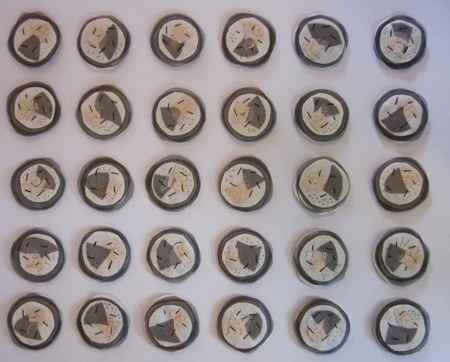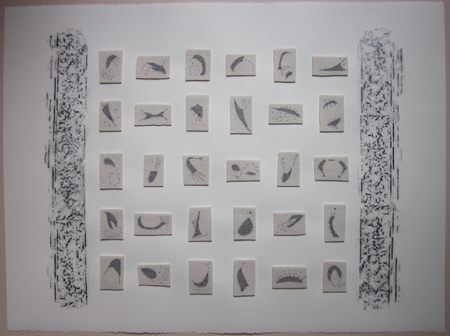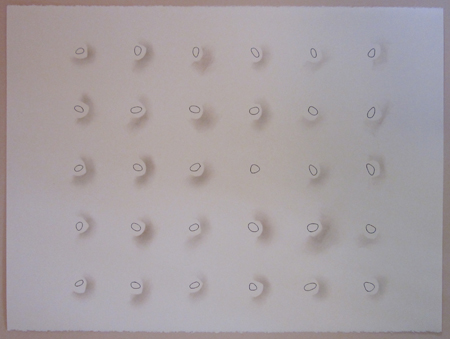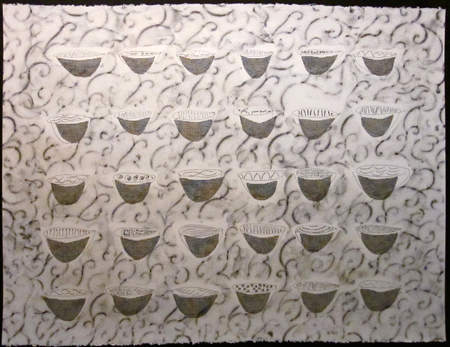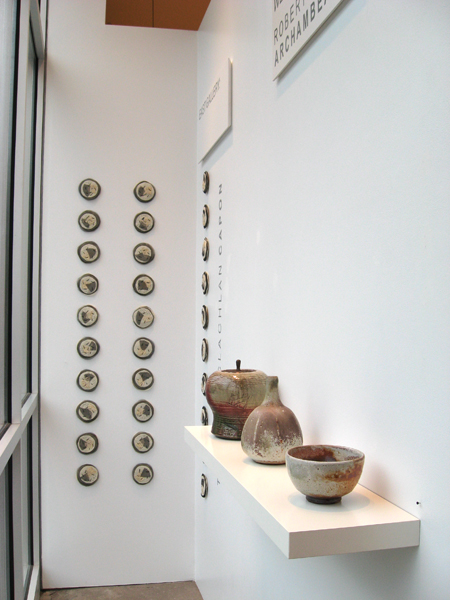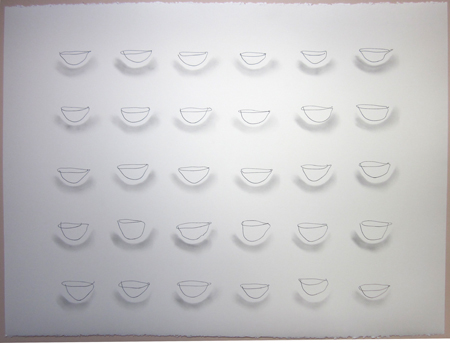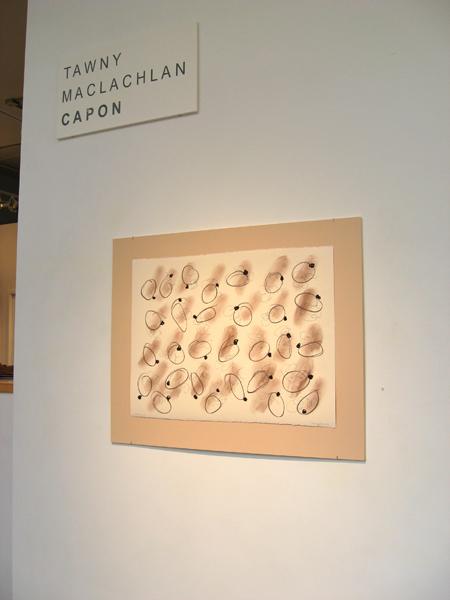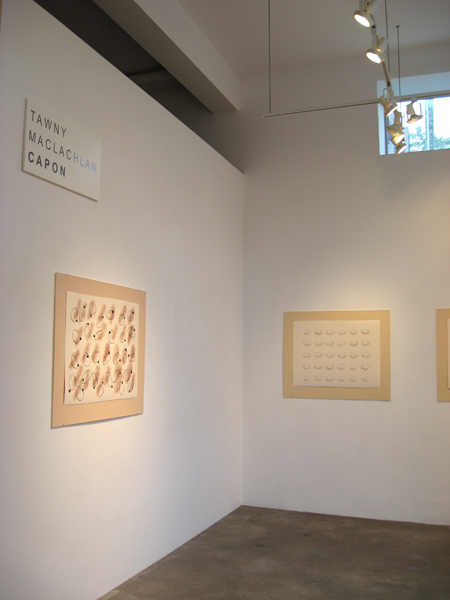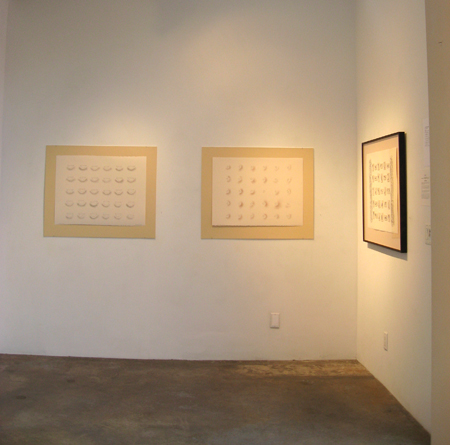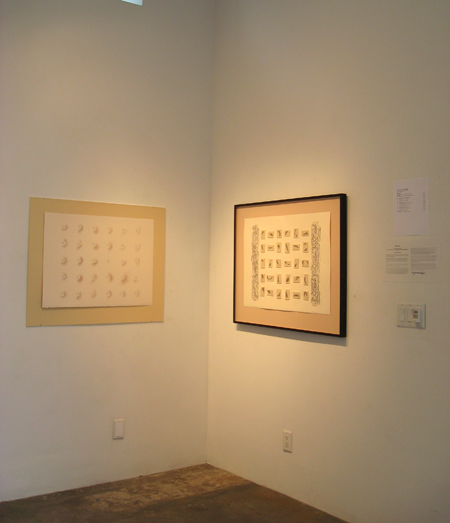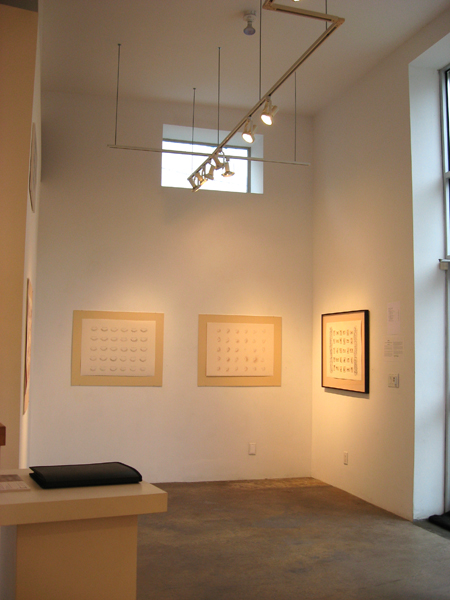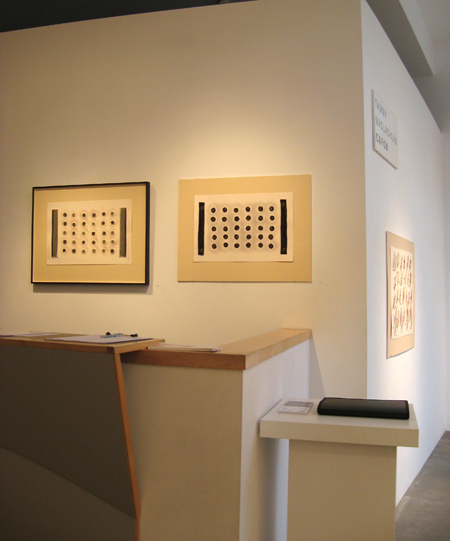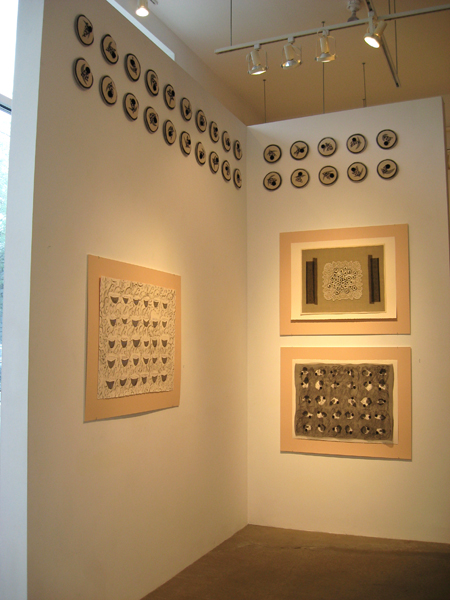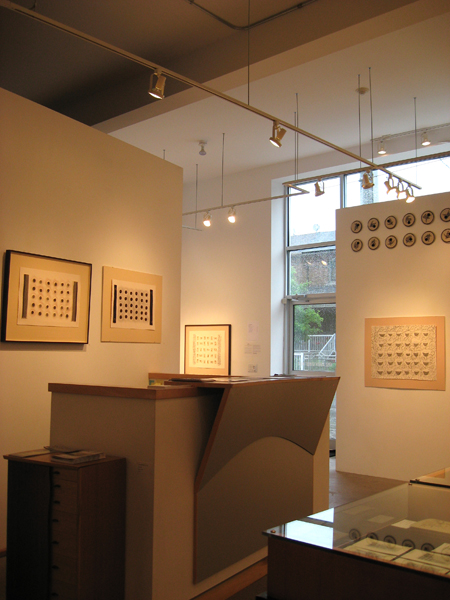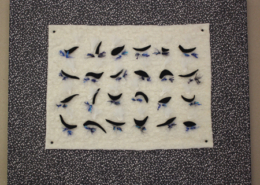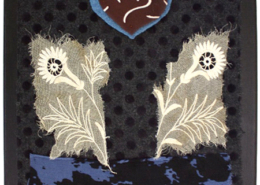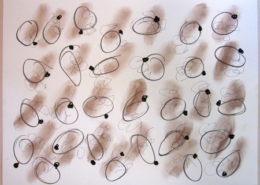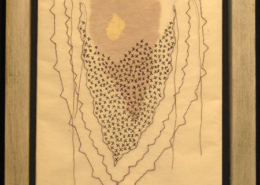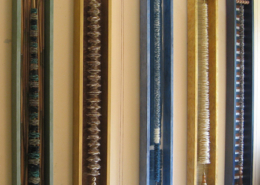Tawny Maclachlan Capon
OPUS 745: Thirty Variations on a Theme
May 31 – June 24, 2012
Artwork inspired by: J.S. Bach’s Goldberg Variations, Baroque Dance Notation, and Gut!
Creating this body of work turned into a magical and musical adventure in art-making for me, bringing together various art forms that I have practised, some in the past, some in the present: music, dance and visual art.
I have always been passionate about music. As a ballet dancer and a costume designer, I studied both dance and dance notation, including the graphic nature of movement. I have worked as a visual artist for many years, experimenting with a range of media. I have a special love for the tactile experience of working with fabrics and physical objects in my visual art.
This work was inspired by an image I have from the Baroque era of dance notation. There are musical notes at the top of the page; dancers in their costumes in the middle section; and, under them, a graph of the steps to take to the music.
With that image in mind, I listened to the Goldberg Variations for harpsichord by J.S. Bach, an aria with thirty variations and an Aria da Capo at the end. The Variations include a Quodlibet, a kind of deliberate musical joke as a contrast to the other elements of the piece. I also listened to recordings by musical artists Keith Jarrett and Wanda Landowska on the harpsichord, and Angela Hewitt’s and Glen Gould’s recordings from 1955 and 1981 on the piano. I heard the different recordings more than two hundred times in total, and never tired of the Variations. This was the music that helped dance the muse for me.
As the works progressed, the number thirty also became a theme in the work. With my love of textiles, I was inspired by the fabric of life (literally and figuratively) at the time the Variations were composed (1741). I was intrigued by the materials used in clothing, such as lace and in the instruments of the day. The harpsichord was made with wood, felt, brass, wire, and raven’s quill, and string instruments used gut string. From such mundane materials, as Shakespeare pointed out in Much Ado About Nothing, great beauty arose: “Is it not strange that sheep’s guts should hale souls out of men’s bodies?”
With my studio full of music playing constantly, the number 30 driving me, and materials all around me-screening, gut string, lace, beautiful cream-coloured paper, graphite, wire, and cotton thread-I had a wonderful time transforming the energy that the music inspired in me into creating, moving and mastering together these pieces of artwork. At a certain point, the mind no longer focuses on technique or method or material, and ceases to strive to an end point, residing instead in a moment in time where nothing else exists but the gift of inspiration and the joy of creation.
I owe thanks to Daniel Larson of Gamut Music, Inc. in Duluth, Minnesota, who sent me a wonderful selection of gut strings to work with; my husband John, a musician, for guiding me through the music maze and finding me different recordings to listen to; J.S. Bach, Glen Gould, Wanda Landowska, Keith Jarrett, and Angela Hewitt; my close friends and family who always support and encourage me; Milo the dog who finally got used to not whining when the music went on; and David Kaye for giving me the opportunity and space to share and patiently listening to J.S. Bach’s Goldberg Variations.
Tawny Maclachlan Capon
The Globe and Mail
Saturday, June 16, 2012
Globe Arts R9
R.M. VAUGHAN
THE EXHIBITIONIST
Tawny Maclachlan
at David Kaye Gallery
Until June 24, 1092 Queen St. W., Toronto; davidkayeprojects.com
Tawny Maclachlan’s multimedia show Opus 745, on, and crawling up, the walls at David Kaye Gallery, explores the magical combination of mathematics and lyricism that is musical composition. In a series of kinetic, jittery works on paper, Maclachlan recreates the same/not same interplay associated with musical improvisation.
A shape is drawn or applied to the paper, and then another very similar, but inexact replica is applied/drawn next to it … and then the system starts over again, until the paper is covered in obviously related but distinct notations and marks. My favourite works, however, are Maclachlan’s soft sculptures, which look like amoebas made from felt.
Again, all the core elements in each sculpture are repeated – rings of coloured material, appliqués of netting, stitched over printed material, and black fabric dots. But, again, no two sculptures are the same, with the variations sometimes being so minute they do not register at first.
The best thing about Maclachlan’s fugues is that they are not subtle. Once you make the “graphic notes = musical notes” connection, you revel in the artist’s obvious pleasure in and willingness to extend a metaphor without apology. Go symphonic or stay home.

